Focal Solo6 ST6 review: A sibling to rival the revered Twin
The smallest member of the ST6 range keeps it strictly analogue as the nearfield monitor market gets tuned by DSP power.
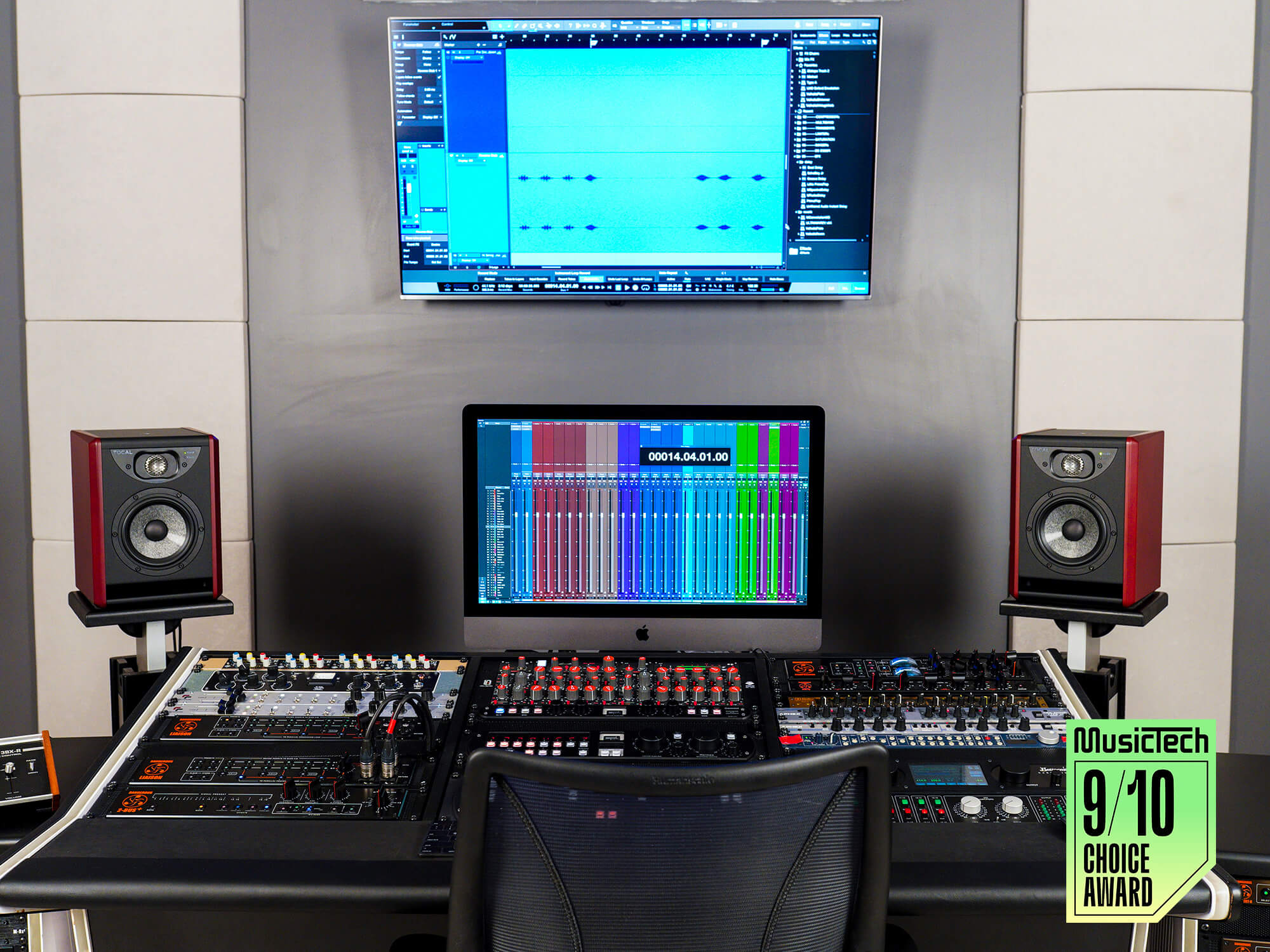
Review Overview
Our rating
9
Our verdict
⊕ Excellent transient tracking coupled with tight, over-ring free bass response
⊕ Focus footswitch function for instant Auratone
⊕ No compromise construction, from the drivers to the weighty enclosure
⊕ Just the right set of rear panel filter controls
⊖ No input level trim apart from the sensitivity switch
Focal has updated its successful SM6 monitoring range to the three-part ST6 product line: the Twin6, Solo6 and Sub12. The Solo6 is a two-way nearfield with a bass reflex port below the 6.5-inch low-frequency driver. The beryllium inverted dome high-frequency driver and its metal protective grille are set in a recessed baffle next to the power and Focus LEDs.
- READ MORE: Phil Speiser THE_INSTRUMENT review: Lightning-fast composition tools and production-ready sounds
Focus is a simple footswitch controllable function that turns off the tweeter to create a single full-range driver system, trimming an octave or so from the bass and the top octave (>10kHz) carried by the high-frequency (HF) driver. Though this is no technological feat, it’s useful for checking audio compatibility with reduced-range devices, such as smartphone speakers. The response is similar to the classic Auratone 5C Super Sound Cubes º and just as handy for zoning into the mid-frequency range.
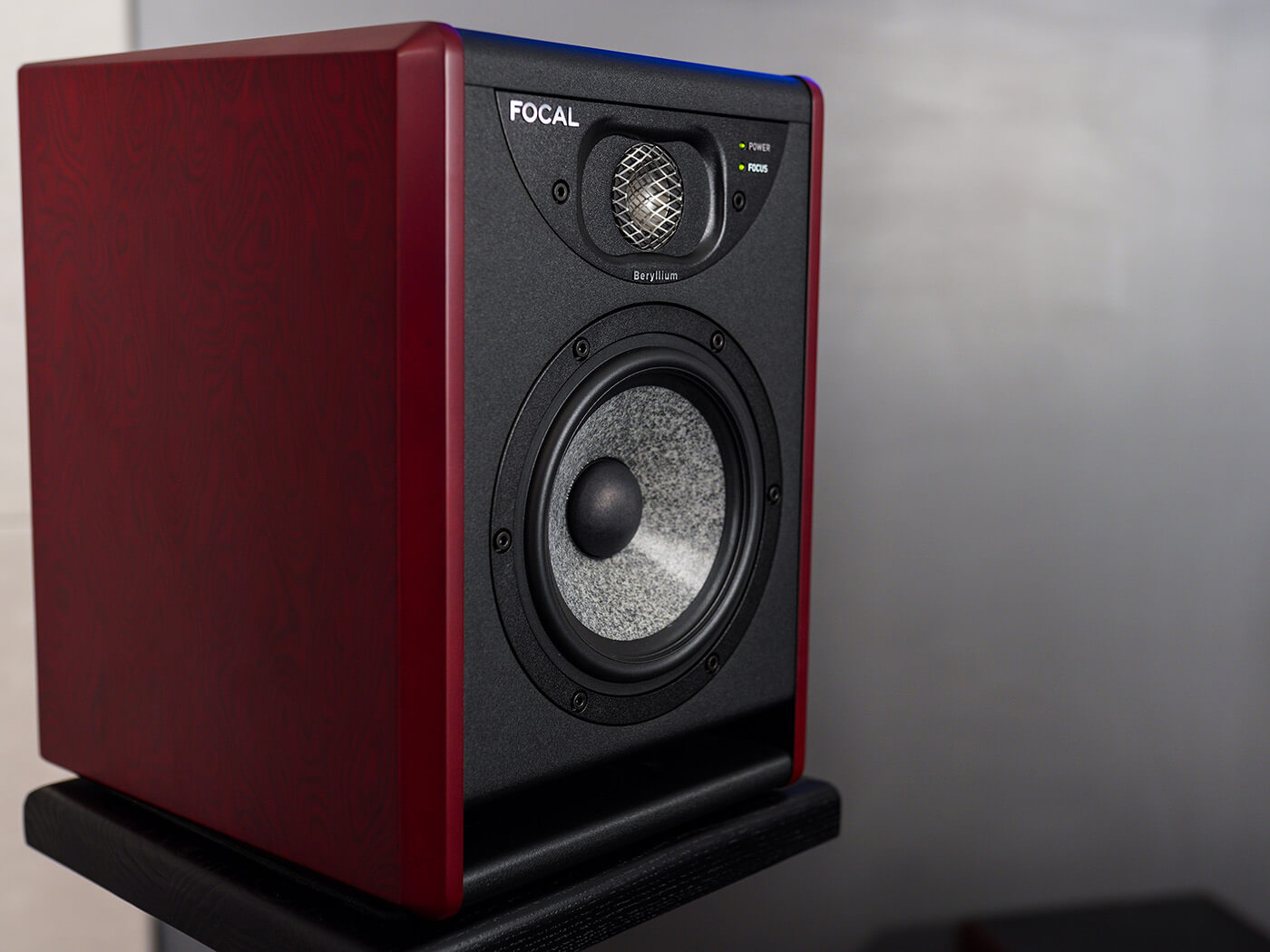
Solo control
The Solo6 offers a lot more control on the rear panel compared to its predecessor, the Solo6 Be. Alongside the sensitivity (+4dBu or -10dBV) and auto-standby switches are four recessed potentiometers to set the high-pass filter, LF and HF shelving filters and a parametric low-mid frequency (160Hz) peaking EQ. The three variable EQs aren’t detented for matching between monitors, but the ±3dB range is short enough to easily line up across multiple units using the markings around the control.
The LMF EQ compensates for the low-mid rise that can occur when it’s desk/console-mounted, so the positive end of the dial may never be used, though some rooms can exhibit a loss in this region through overzealous bass trapping. These controls are beyond adequate to redress room acoustics and address listener preference, but little is needed in an acoustically treated room due to the quality of the sonic performance, more on which below.
The HPF will help adjust for a subwoofer addition, and though the ST6 range carries the Sub12 it would also be worth considering the slightly cheaper/smaller Sub One from Focal, which is excellent.
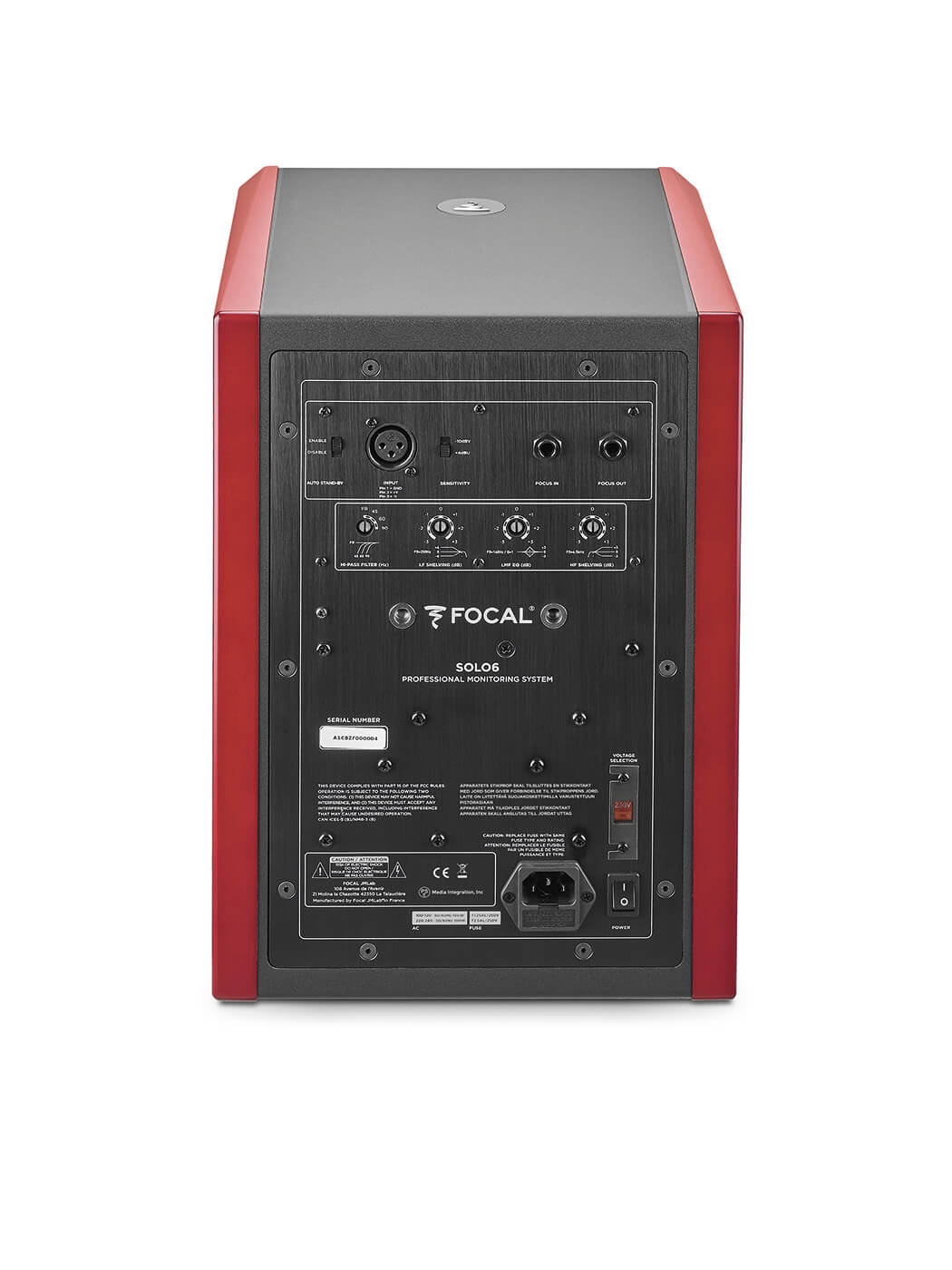
Solid quality
Focal’s Solo6 continues the elegant design aesthetic of its SM6 line with a seriously solid enclosure that will please those seeking mass and a lack of boxy resonance. This is a substantial slab of monitor that is beautifully engineered, from the rounded, tapered edges to the subtle recess of the tweeter baffle.
The woofer makes use of Focal’s BASH woofer amplifier (hybrid Class AB & D) and TMD (Tuned Mass Damper) driver with the ‘W’ shaped cone – a sandwich of woven glass tissue sheets over a foam core. Much like the beryllium inverted dome tweeter (Class AB amplified), the design here seeks to radically reduce distortion by maximising rigidity, minimising mass and balancing the damping effect of the cone. These are the elements that give the Solo6 its hefty price tag, but also its professional sound reproduction quality. A final note on the drivers; there is plenty of power on tap before the overload protection is engaged, but those wanting to blast out their earwax may need something heavier on the dB SPLs.
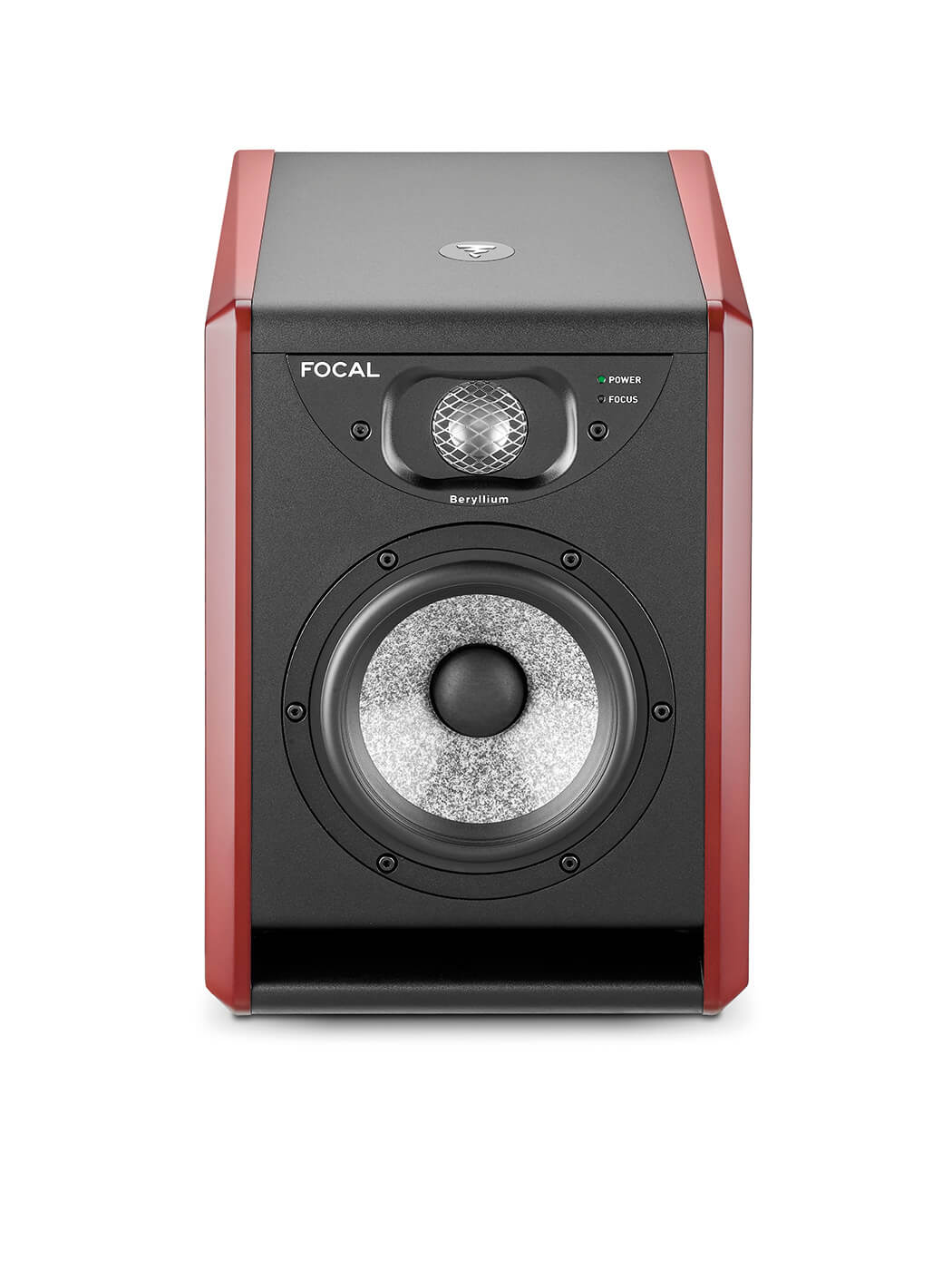
Articulation and imaging
Focal monitors are renowned for their mid-range articulation. In this regard, the Solo6 doesn’t disappoint. From top to bottom, these are superb nearfield monitors but the mids are undoubtedly the highlight. There is a strong coherence to the source audio projected from the two drivers, with the crossover seemingly invisible to the ear, producing a single sound stage unrippled across the frequency spectrum. The sonic picture remains stable when moving off-axis and the stereo image possesses a remarkable clarity over a wide listening area, from the front to the back of the room, sitting or standing and shifting from side to side, which is so important when reaching across to adjust hardware or address off-centre DAW controls.
The responsiveness of the drivers is, to talk in contradiction, audible in its transparency. You can clearly perceive the tiny distortions and transients that adorn many sources, especially bowed instruments, as if viewing the hairs on insects through a microscope. This pays dividends across all forms of audio production. Try as you might, it’s impossible to detect any ringing, resonance, over-presence or masking in the Solo6 crossover region or anywhere above or below it.

Extended tweet
The tweeters, with their 40kHz extension, remain crisp and accurate with no hint of distortion and, as advertised, they do not incur any fatigue over long hours of use. A gentle lift of the HF shelf (~1dB) was all we needed to reclaim the slight loss in the highs due to control room acoustics during review tests, and an equally slight cut via the LMF (160Hz) EQ removed the minor tubbiness produced by the mixing console they were situated behind.
Low punch
The low end is just as smooth and can track the punch and thump of whatever is thrown at the Solo6s without ringing on and blurring the lines between basses and kicks. The ports add no unpleasant ‘chuffing’ when heavy bass is applied, so what you hear is what there is. There is plenty of range for most duties but, in combination with a high-quality sub, they will produce a truly killer monitoring rig. The same can be said of their suitability for surround/Atmos setups, and the rear wall mount threads make them prime candidates for satellites where budgets allow.
Faultless
It is near impossible to fault the Solo6 (maybe a stepped input trim?) from the sound to the rear panel functions. The Focus control, as simple as it is, adds a utility that you might run separate monitors for. Of course, Focal isn’t exactly giving these splendid monitors away, but it is hard to argue with the price when the quality is this supreme. The real question is whether to delve a little deeper and invest in the Twin6s – for the smaller footprint, the Solo6s are hard to beat.
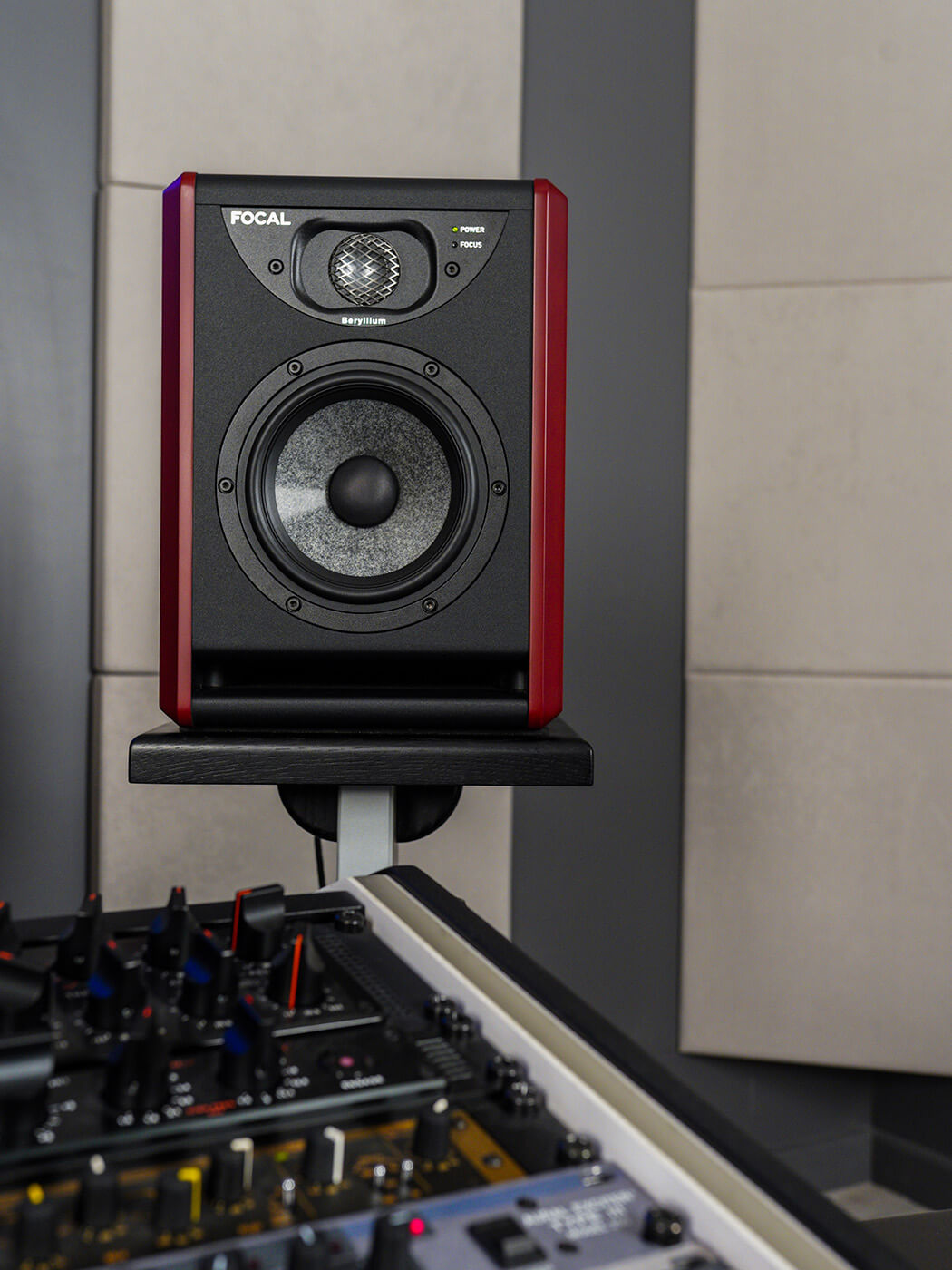
Reference tracks
- Nude – Radiohead (In Rainbows): A bone-dry bed of drums and bass are revealed in exquisite detail on the Solo6 monitors. Not only when they are briefly alone in the mix before Thom Yorke’s vocal appears, but throughout, with the kick drum-dominated compression sucking out the hi-hats and ride cymbal becoming even more apparent. Every detail of the vocal, reverbs, backing vocal compression/noise, amp noise and electric/acoustic guitar is revealed as crisp and clear as you could wish for.
- On A Plain – Nirvana (Nevermind): The tight low-end of the kick drum and bass guitar are rendered as they should be, even at low volumes, while the fizz of the guitars, which can corrode the ears on harsh speakers, bite as they were (likely) intended without making you reach for the volume knob. Even more of a surprise is how identifiable the vocal reverb on the verses is – the decay has never been so obvious through the intense drum and guitar mid-range. It rips, but nothing is hyped, subtracted or wrinkled.
- Living In Denial – Michael Kiwanuka (Kiwanuka): The rubber band bass and spring reverb-coated drums stand out with clarity throughout, even as guitars, vocal layers, electric piano and organ eat the mix’s space with their attendant reverbs. The incidental and pushed-back vocal parts in verses are easy to pick out behind Michael’s lead, which is itself brought forward with every breath and vocal cord crackle on display.
Key Features
- Configuration: ported 2-way powered monitor (1-way full range woofer in Focus Mode)
- Drivers: 6.5” (16.5cm) “W” cone woofer, 1.5” (38mm) Beryllium inverted cone tweeter
- Controls: HPF (45/60/90Hz), LF shelving (±3dB @ 250Hz), LMF peaking (±3dB @ 160Hz), HF shelving (±3dB @ 4.5kHz), auto stand-by, input sensitivity (+4dBu/-10dBV)
- I/O: XLR (balanced input), 2x 6.35mm TS jack (Focus In & Out)
- Max. SPL: 110dB (50Hz-10kHz, free field @1m)
- Power handling: 80W RMS (woofer), 50W RMS (tweeter)
- Frequency response (-3dB): 40Hz to 40kHz (110Hz to 10kHz in Focus Mode)
- Dimensions: 33.4 (H) x 24.6 (W) x 29.5 (D) cm
- Weight: 13kg each
- £1,199 each
- Contact Focal
- Buy: Gear4music, Andertons